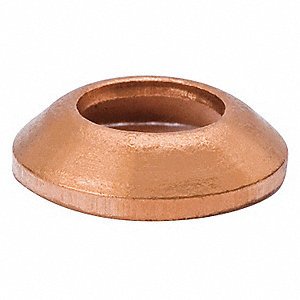Stolen C&P
Brass is susceptible to
stress corrosion cracking,
[26] especially from
ammonia or substances containing or releasing ammonia. The problem is sometimes known as
season cracking after it was first discovered in brass
cartridges used for
rifle
Stolen C&P
ammunition during the 1920s in the
British Indian Army. The problem was caused by high
residual stresses from cold forming of the cases during manufacture, together with chemical attack from traces of ammonia in the atmosphere. The cartridges were stored in stables and the ammonia concentration rose during the hot summer months, thus initiating brittle cracks. The problem was resolved by
annealing the cases, and storing the cartridges elsewhere.




